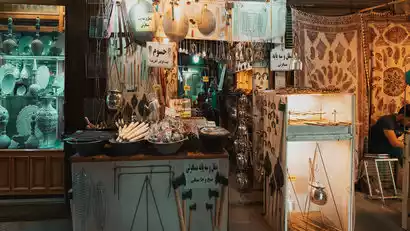Day 1 Shanghai → Tehran ★Departure day reference flight: W5076 23:00-04:05+1
All day
If unexpected surprises along the way are the meaning of your travels, then Iran may be the country in the world you should visit.
Today is the gathering day for the activity. Tourists from all over the country will gather at the departure hall of Shanghai Pudong International Airport at the designated time (the specific time is subject to the tour book), check in under the guidance of the tour leader, and take Iran Mahan Air to Tehran, the capital of Iran, which is known as the "Paris of the Middle East".
Reference flight information: Mahan Air W5076 23:00-04:05+1 (Shanghai Pudong PVG-Tehran IKA) (flight time approximately 10 hours). The time difference in Iran is 4.5 hours later than Beijing time.

Day 2 Tehran → Kashan
All day
Arrive at Tehran Imam Khomeini International Airport in the morning.
We'll travel to the beautiful oasis city of Kashan, then visit the over 500-year-old Sultan Ahmed Hammam. Its exquisite interiors feature intricate dome patterns and distinctive hemispherical protrusions on the roof, resembling a UFO. We'll also visit the Brujerdi Mansion, located on Alavi Street in Kashan's Sultan Amir Ahmed district. Completed in 1876, it took 18 years to build. The owner of the mansion was Haki Sayyid Jafar Brujerdi, a wholesaler. The Kashan Cultural Heritage Administration is currently located here. We'll then visit the Tabatabai House, featuring a rectangular courtyard, the main building and surrounding walls, and a central rectangular fountain. These distinctive features of ancient Persian mansions are all embodied in this mansion, built by the wealthy merchant Sayyid Tabatabai in the late 19th century.
Then, visit the Fin Gardens, perhaps the best-preserved garden of its kind in Iran. Originally designed for King Abbas I, this classical Persian paradise, over 1,000 years old, has long been acclaimed for its natural fountains.
Then return to Kashan hotel to rest.


Day 3 Kashan → Obiyaneh Village → Isfahan
All day
After breakfast, we'll drive to Obyannāh, a small village over 1,500 years old, nestled in a secluded mountainside. Women here wear floral headscarves, preserving the clothing of the Parthian period. Originally founded during the Sassanid Empire, the village was a Zoroastrian religion, and legend has it that the villagers still speak traditional Persian.
We'll then drive to Isfahan, Iran's third-largest city and a cultural capital with a distinctly Arab character. It's a UNESCO World Heritage Site.
Upon arrival, proceed to photograph the oldest and largest extant mosque in Iran, the Jammu and Kashmir Mosque. Built in the 11th century, the Jammu and Kashmir Mosque incorporates architectural styles spanning over 800 years. In 2012, it was designated a UNESCO World Heritage Site. The Jammu and Kashmir Mosque epitomizes the evolution of Islamic architecture over 800 years, incorporating elements from the Seljuk, Mongol, and Safavid eras, a unique feature not seen anywhere else in the world.
We'll then visit the Haju Bridge, built in the 17th century during the Safavid period, with former royal gardens on either side. We'll then visit the Thirty-Three Arch Bridge over the Zaindrut River. Built in 1602, it's 298 meters long, double-decker, and features 33 arches. At night, the illuminated arches are even more stunning. This iconic brick and stone bridge spanning the Zaindrut River remains beautiful and functional for 600 years, and its captivating night view is truly captivating.


Day 4 Isfahan full day activities
All day
Visit Isfahan, the "half of the world", which was once the capital of the Safavid dynasty, a great dynasty in Iranian Islamic history.
After breakfast, we'll visit the Isfahan Music Museum, a beautiful museum nestled under a small bridge. It showcases traditional Persian and Isfahan instruments and music, and we'll also enjoy a short musical performance. We'll then visit the Palace of the Forty Columns, one of the most important palaces of the Safavid dynasty, built in 1647. The palace houses numerous precious historical paintings and various artifacts.
Then, visit Imam Square in the city center. Built in 1602, it's the second largest square in the world. The Imam Mosque, built in 1611, is magnificent and ornately decorated, ranking first in the country. Then, visit the Sheikh Rauf Mosque, featuring the cover of the album and its magnificent dome.
Finally, we will visit the ancient Middle Eastern Grand Bazaar, which was rebuilt in the early 17th century. It stretches for two kilometers and has a wide variety of goods. After dinner, we will rest at the hotel.


Day 5 Isfahan → Meybod → Yazd
All day
After breakfast, we'll drive to Meybod, a vast adobe town with a history dating back at least 1,800 years. Although now a decaying ancient city, from a vantage point nearby, one can survey the entire city and experience the decline and desolation of ancient Persian civilization.
Upon arrival, we'll have lunch and then visit Narin Castle, a fascinating structure in Meybod. Though gradually crumbling, it stands at the heart of the city and dates back to the Sassanian period. It's perhaps the oldest adobe structure in Iran. Climbing to the top of the castle offers a breathtaking view overlooking the rooftops of Meybod and the surrounding Kavir Desert.
Then we went to visit the Meybod Ice House. It is actually a place where Iranians store water. There are two pools outside the ice house. At night, people pour water into the pools outside. In winter, the temperature is very low at night, and the water will freeze. It can be stored and used in the summer.
Then, we'll visit the Pigeon Tower. There are many Pigeon Towers across Iran, but the one in Meybod is particularly noteworthy. The tower can house 25,000 pigeons, each with its own nest, safe from predators. The pigeon droppings are collected and used as fertilizer.
Drive to Yazd and check into hotel upon arrival.


Day 6 Yazd
All day
After breakfast, we'll drive to the Tower of Silence, a Zoroastrian temple where sky burials are practiced. Before heading up the mountain, we'll pass an ancient village, no longer inhabited, but with its distinctive Middle Eastern-style earthen houses, a testament to its rich history.
Note: The Tower of Silence may be temporarily closed during the Dragon Boat Festival. If it is closed, the viewing will be cancelled. Please understand.
Then we will go to visit the [Jewel of the Rings Mosque], also known as the "Friday Mosque". This magnificent building is particularly eye-catching in the old city. Its height is one of the highest in Iran. Pronounced as Masjed-e Jameh in Persian, it is composed of four religious buildings from different eras, forming a mosque complex rich in historical connotations in Iran. The Jameh Mosque embodies the evolution of Islamic religious architecture over the past 800 years, and has characteristics of the Seljuk, Mongol and Safavid eras, which cannot be seen anywhere else in the world.
We will then take you to visit Iran's unique Zoroastrian Fire Temple (closed every Friday): Zoroastrianism is a world-renowned fire-worshiping religion. Every year, its believers come from all over the world to visit this fire temple. It is said that the sacred fire has never been extinguished since 470 AD. You can see the flickering sacred fire through a window in the foyer.
After lunch, we'll explore the Old City of Yazd. The central area of Yazd's Old City is a maze of narrow streets, devoid of street signs and winding in a chaotic manner. Walking through it, surrounded by mud houses on both sides, it feels like entering an endless maze. It's quite charming.
We will then visit the Dolat Abad Garden and the Wind Tower. Built by the former governor of Yadzd, the Dolat Abad Garden is a truly traditional Iranian garden, divided into two rectangular gardens, one in the north and one in the south. The wind tower of Dolat Abad is known as the most beautiful wind tower in Iran.
In the evening, we visited the Amir Chahmag Square, a city landmark with a magnificent architecture. Its two minarets point to the sky and its round arch is very distinctive. The grass in front of the square is a good place for people to relax. Under the arch in the middle of the square is a small bazaar with specialty shops selling food and textiles.
After dinner we checked into the hotel to rest.


Day 7 Yazd → Pasargadae → Persepolis → Shiraz
All day
After breakfast, we'll visit Pasargadae, a city built in the 6th century BC and the capital of the Persian Empire during the reign of Cyrus the Great. It was also the first capital of the Achaemenid Empire. The site, covering 160 hectares, includes a building widely believed to be the tomb of Cyrus II, a fortress perched on a nearby hill, and the remains of two royal palaces and gardens. It is not only an outstanding example of early Achaemenid art and architecture, but also a remarkable testimony to Persian civilization. It is a UNESCO World Heritage Site. Founded in 546 BC, Pasargadae is located in a basin in the Zagros Mountains, 5 kilometers northeast of the ruins of Persepolis, approximately an hour and a half drive away.
Afterwards, we'll travel to Persepolis, meaning "Capital of Persia." Iranians call it "Takht Jamshid," or "Throne of Jamshid." Inscribed on the UNESCO World Heritage List in 1979, it witnessed the rise and fall of the ancient Achaemenid Empire. It borders Mount Kuramat to the east and is surrounded on three other sides by walls of varying heights, following the slopes of the mountain. The royal palace within the city is built on a stone platform. The main buildings include the Assembly Hall, Audience Hall, Palace, Treasury, and storerooms. All structures are constructed of large dark gray stone, often adorned with marble. Two massive stone stairways extend to the north end of the palace's western wall. To the east lies the Quadrilateral Gate, built by King Xerxes.
Then drive to Shiraz and check into the hotel for rest after dinner.


Day 8 Shiraz full day activities
All day
After breakfast, visit the Moq Mosque, also known as the Pink Mosque, built in 1876. This elegant and photogenic mosque in southern Iran is nicknamed the "Pink Mosque" for its prominent pink glaze on its exterior walls. Despite its small size, it holds the reputation of being Iran's most beautiful mosque. Like a veiled maiden, it quietly awaits your approach.
Note: The Pink Mosque is under repair and it is not known when it will be completed. If it is under repair, you can go to the Pink Lake instead.
We'll then visit the Tomb of the Light King (note: cameras are prohibited here). This is the mausoleum of Ahmad, brother of the Islamic prophet Imam Reza, dating back to the 12th century. Standing before its blue-tiled dome and gleaming golden dome, this Shia shrine exudes a profound sense of tranquility. The numerous blinged-out mirrors embedded in the room add to its mystique. We'll then visit the Ali Ibn Hamza Mausoleum, also known as the Green Mirror Mosque, the mausoleum of Emir Ali, Shah Cheragh's nephew, who also died there. It shares a similar aesthetic with the Tomb of the Light King, but cameras are permitted inside! The interior, composed entirely of crystal glass and mirrors, is a dazzling sight.
Enjoy lunch at an Iranian restaurant. After lunch, visit the Tomb of Hafez, the great Persian poet. Born in the 14th century, Hafez was a prominent Iranian lyric poet. His poetry, second only to the Quran in influence, has become an integral part of Iranian life. After bidding farewell to the master's tomb, we will visit the Quran Gate, a decorative gate built in the north of Shiraz over a thousand years ago. After dinner, transfer to the hotel for the night.

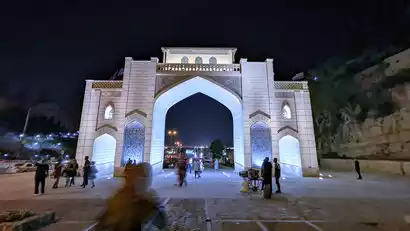
Day 9 Shiraz → Tehran inland section to be determined
All day
After breakfast, transfer to the airport for a domestic flight to Tehran. Upon arrival, visit the Freedom Monument, a popular tourist attraction. This historical monument, shaped like an inverted Y, now stands as a symbol of Tehran's status as a capital. Upon arrival, drive to the former U.S. Embassy in Tehran, a unique and must-see attraction in Iran, featuring wall-to-wall murals, a truly ironic sight. Afterwards, transfer to your hotel for check-in and rest.
Note: Due to the frequent cancellations or delays of domestic flights in Iran, the itinerary for that day may be changed due to flight conditions. Thank you for your understanding!
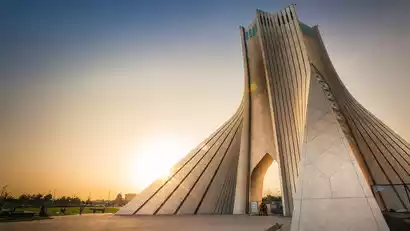
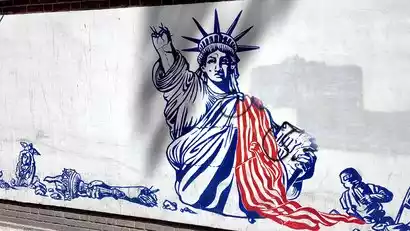
Day 10 Tehran → Shanghai Reference Flight: W5077 20:50/09:45+1 (Shanghai)
All day
After breakfast, visit the Golestan Palace, located south of Khomeini Square in central Tehran. This palace boasts a rich Islamic architectural style. Its exterior features vibrant glazed tiles, while its interior boasts traditional Iranian glass mosaics, creating a luxurious and exquisite experience.
We'll visit the National Museum of Iran. While not as impressive as the Louvre, it houses the essence of Persian civilization and epitomizes Iran's ancient and sophisticated history. It plays a crucial role in understanding Iran's glorious past and the rise and fall of its dynasties. We'll then depart for the airport at the designated time to board our international flight back to Shanghai.
Reference flight information: Mahan Air W5077; 20:50-09:45+1 (Tehran IKA-Shanghai Pudong PVG)
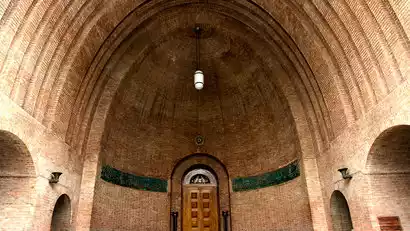
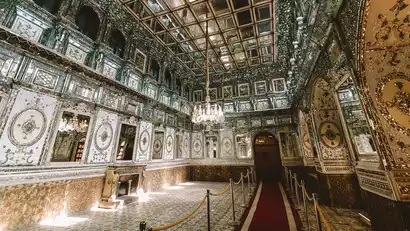
Day 11 Shanghai
All day
It is expected to arrive at Shanghai Pudong Airport at 9:55 am, ending this trip.
